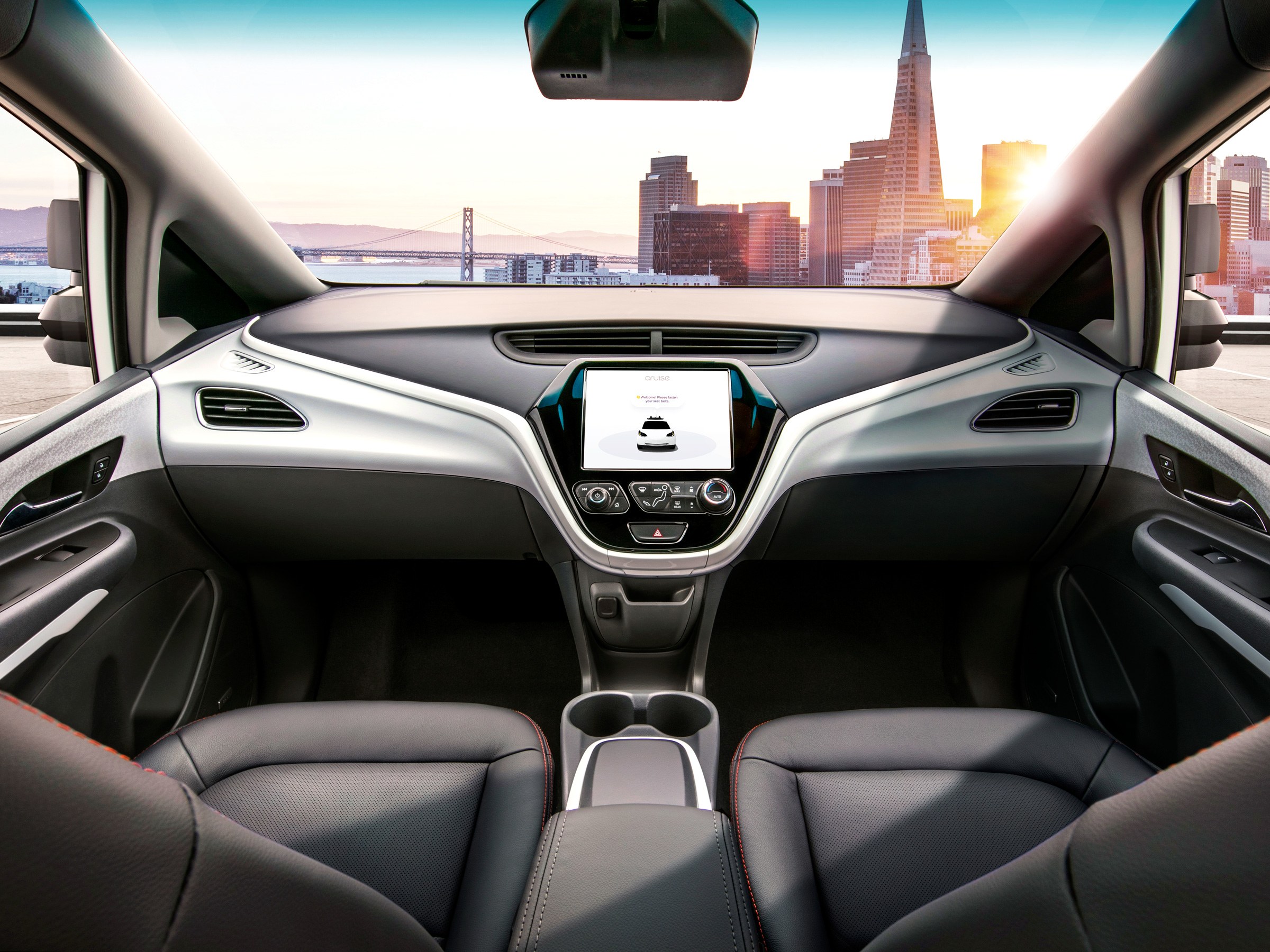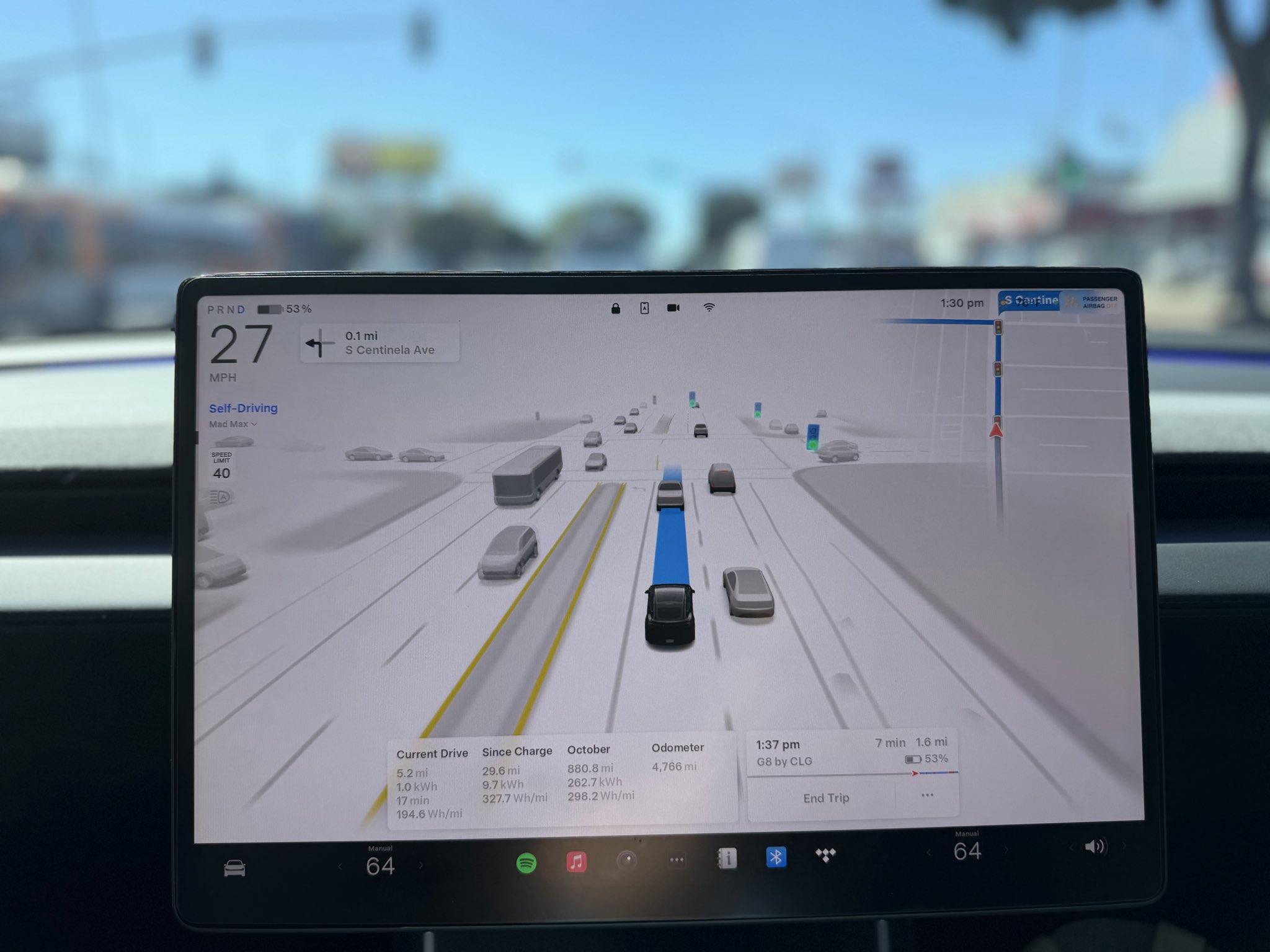

News
Tesla’s race to full self-driving under pressure as GM Cruise gets $2.25B investment
In a press release on Thursday, General Motors announced that SoftBank would be investing $2.25 billion in the automaker’s self-driving unit, GM Cruise Holdings LLC. The Detroit-based auto giant would also be investing an additional $1.1 billion into its self-driving division. These investments are aimed at boosting the unit’s capability to reach commercialization at scale by next year.
GM Chairman and CEO Mary Barra lauded the additional investments into the company’s self-driving unit. Barra noted in the press release that the support from SoftBank adds an “additional strong partner” as the automaker pursues its “vision of zero crashes, zero emissions, and zero congestion.”
GM Cruise currently operates a fleet of autonomous Chevy Bolt EVs in San Francisco that provide autonomous ride-hailing services to its employees. Plans are also underway to develop a Chevy Bolt EV variant that is specifically designed to be fully autonomous, with the vehicle not having pedals or a steering wheel.
SoftBank’s $2.25 billion investment into GM Cruise will be made in two tranches. SoftBank Vision Fund will first invest $900 million at the closing of the transaction. Once GM Cruise’s autonomous vehicles are ready to hit the market, Vision Fund will release the second tranche of $1.35 billion. This will ultimately result in SoftBank Vision Fund commanding a 19.6% stake in GM Cruise.
The new investment brings GM Cruise’s valuation close to $11.5 billion. The investment also brings to light the arguable undervaluation of Tesla’s Autopilot system, which has been on the consumer market for several years and has more than 150,000 vehicles from around the world that’s collecting data.
Still, GM Cruise’s new financial backing puts tremendous pressure on Tesla, which has seen its fair share of scrutiny as it steadily improves its Autopilot software in the public eye. Despite having collected reservation deposits for its Full Self-Driving capability that is yet to be released, Autopilot continues to improve and pacing toward full autonomy, according to CEO Elon Musk.
During the Q4 2017 earnings call, Musk addressed the delays in the company’s planned coast-to-coast autonomous drive. The exhibition, which was set for December 2017, did not pan out, although Tesla could have accomplished the coast-to-coast trip, according to Musk. However, doing so would have required far too much “specialized code” that would only be fully effective on a particular route. During the earnings call, Musk stated that Tesla would likely conduct the autonomous coast-to-coast drive sometime this year.
One notable difference between Tesla and GM Cruise, and Google’s Waymo is the Tesla’s opposition to the utilization of LiDAR technology – a common fixture on self-driving cars. Instead of LiDAR, Tesla’s electric cars rely on a series of cameras, radar, and ultrasonic sensors to collect data on a vehicle’s surroundings. LiDAR, which is used in GM Cruise’s Chevy Bolt EVs and Waymo’s autonomous vehicles, boasts high spatial precision. Inasmuch as LiDAR can measure distances well, however, it performs poorly in bad weather.
Ultimately, Tesla’s ace-in-the-hole in the increasingly competitive self-driving car market could be its neural net and sharing of fleet data. There are roughly 150,000 AP2.0 vehicles on the road today, with each one providing valuable data to Tesla’s deep neural networks. Akin to the human brain, the more data that is available to train the neural network, the better its performance would be.
Ultimately, Tesla’s neural net could be the difference-maker when the company goes all-in and competes in the self-driving race. Until then, however, the electric car maker could soon be taking a backseat to companies like GM Cruise and Waymo, both of which are accelerating their efforts at rolling out consumer-ready autonomous vehicles in the near future.

News
Tesla FSD Supervised ride-alongs in Europe begin in Italy, France, and Germany
The program allows the public to hop in as a non-driving observer to witness FSD navigate urban streets firsthand.

Tesla has kicked off passenger ride-alongs for Full Self-Driving (Supervised) in Italy, France and Germany. The program allows the public to hop in as a non-driving observer to witness FSD navigate urban streets firsthand.
The program, detailed on Tesla’s event pages, arrives ahead of a potential early 2026 Dutch regulatory approval that could unlock a potential EU-wide rollout for FSD.
Hands-Off Demos
Tesla’s ride-along invites participants to “ride along in the passenger seat to experience how it handles real-world traffic & the most stressful parts of daily driving, making the roads safer for all,” as per the company’s announcement on X through its official Tesla Europe & Middle East account.
Sign-ups via localized pages offer free slots through December, with Tesla teams piloting vehicles through city streets, roundabouts and highways.
“Be one of the first to experience Full Self-Driving (Supervised) from the passenger seat. Our team will take you along as a passenger and show you how Full Self-Driving (Supervised) works under real-world road conditions,” Tesla wrote. “Discover how it reacts to live traffic and masters the most stressful parts of driving to make the roads safer for you and others. Come join us to learn how we are moving closer to a fully autonomous future.”
Building trust towards an FSD Unsupervised rollout
Tesla’s FSD (Supervised) ride-alongs could be an effective tool to build trust and get regular car buyers and commuters used to the idea of vehicles driving themselves. By seating riders shotgun, Tesla could provide participants with a front row seat to the bleeding edge of consumer-grade driverless systems.
FSD (Supervised) has already been rolled out to several countries, such as the United States, Canada, Australia, New Zealand, and partially in China. So far, FSD (Supervised) has been received positively by drivers, as it really makes driving tasks and long trips significantly easier and more pleasant.
FSD is a key safety feature as well, which became all too evident when a Tesla driving on FSD was hit by what seemed to be a meteorite in Australia. The vehicle moved safely despite the impact, though the same would likely not be true had the car been driven manually.
News
Swedish union rep pissed that Tesla is working around a postal blockade they started
Tesla Sweden is now using dozens of private residences as a way to obtain license plates for its vehicles.

Two years into their postal blockade, Swedish unions are outraged that Tesla is still able to provide its customers’ vehicles with valid plates through various clever workarounds.
Seko chairman Gabriella Lavecchia called it “embarrassing” that the world’s largest EV maker, owned by CEO Elon Musk, refuses to simply roll over and accept the unions’ demands.
Unions shocked Tesla won’t just roll over and surrender
The postal unions’ blockade began in November 2023 when Seko and IF Metall-linked unions stopped all mail to Tesla sites to force a collective agreement. License plates for Tesla vehicles instantly became the perfect pressure point, as noted in a Dagens Arbete report.
Tesla responded by implementing initiatives to work around the blockades. A recent investigation from Arbetet revealed that Tesla Sweden is now using dozens of private residences, including one employee’s parents’ house in Trångsund and a customer-relations staffer’s home in Vårby, as a way to obtain license plates for its vehicles.
Seko chairman Gabriella Lavecchia is not pleased that Tesla Sweden is working around the unions’ efforts yet again. “It is embarrassing that one of the world’s largest car companies, owned by one of the world’s richest people, has sunk this low,” she told the outlet. “Unfortunately, it is completely frivolous that such a large company conducts business in this way.”
Two years on and plates are still being received
The Swedish Transport Agency has confirmed Tesla is still using several different workarounds to overcome the unions’ blockades.
As noted by DA, Tesla Sweden previously used different addresses to receive its license plates. At one point, the electric vehicle maker used addresses for car care shops. Tesla Sweden reportedly used this strategy in Östermalm in Stockholm, as well as in Norrköping and Gothenburg.
Another strategy that Tesla Sweden reportedly implemented involved replacement plates being ordered by private individuals when vehicles change hands from Tesla to car buyers. There have also been cases where the police have reportedly issued temporary plates to Tesla vehicles.
News
Czech Deputy excited for Tesla FSD, hints at Transport Committee review
The ANO party lawmaker shared his thoughts about FSD in a post on social media platform X.

Martin Kolovratník, a Czech Republic Chamber of Deputies member, has expressed his excitement for Tesla’s Full Self-Driving (FSD) after an apparent constituent called for a quick approval for the advanced safety system.
The ANO party lawmaker, who drives both diesel and EV, shared his thoughts about the matter in a post on social media platform X.
The official’s initial statements
Kolovratník kicked off the exchange with a post outlining his coalition’s efforts to scrap highway toll exemptions for electric vehicles and plug-ins starting in 2027.
“Times have changed. Electric vehicles are no longer a fringe technology, but a full-fledged part of operations. And if someone uses the highway network, they should follow the same rules as everyone else. That’s the basis of fairness,” he wrote.
He emphasized equity over ideology, noting his personal mix of diesel and electric driving. “For this reason, there is no reason to continue favoring one technology at the expense of another… It’s not about ideology, it’s about equal conditions. That’s why we clearly agreed within the new coalition: the exemption for electric vehicles and plug-ins will end in 2027. The decision is predictable, understandable, and economically sound.”
Tesla FSD enthusiasm
The conversation pivoted to Tesla’s FSD when X user @robotinreallife, who seems to be one of the official’s constituents, replied that other matters are more important than ending highway exemptions for EVs.
“I’m happy to pay for the highway, but I have a question about a much more fundamental matter: The Netherlands will approve the operation of Tesla FSD in February 26, a technology that has been proven to reduce accidents. The Czech Republic has the option to immediately recognize this certification. Do you plan to support this step so that we don’t unnecessarily delay?” the X user asked.
Kolovratník responded promptly, sharing his own excitement for the upcoming rollout of FSD. “I know about it. I like it and it seems interesting to me. Once we set up the committees and subcommittees, we’ll open it right away in that transport one. Thanks for the tip, I’ll deliver the report,” the official noted in his reply on X.
Kolovratník’s nod to FSD hints at the system’s potentially smooth rollout to Czechia in the coming year. With the Netherlands possibly greenlighting FSD (Supervised) in early 2026, Kolovratník’s commitment could accelerate cross-border certification, boosting FSD’s foray into Europe by a notable margin.










